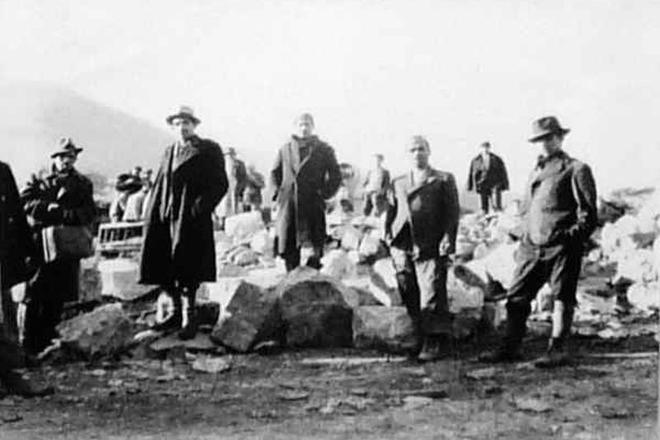A PHOTO EXHIBITION in Revúca commemorates the establishment of a forced labour camp from 70 years ago. Period photographs, collected by historian Dušan Dubovský (who is also the curator of the exhibition) detail the history of a railway track that was planned to connect Tisovec with Revúca, but which was never completed or used.
Between 1943 and 1944, “unreliable people”, i.e. unreliable from the point of view of the then Slovak State, a satellite of Nazi Germany, built the railway through forced labour. The plan for this track was to connect central and eastern Slovakia so that trains would not have to cross the Hungarian border. “At that time, the [current Slovak] municipality of Jelšava was part of Hungary,” Dubovský explained for the TASR newswire. “Most people considered ‘unreliable’ by the state were Gypsies and Jews, who were used as a cheap labour force on the construction of the railway. They were guarded and beaten by officers with loaded guns, and worked up to eight hours in winter and much more in summer. In the end, construction was stopped and never completed. In spite of the lack of machinery and really harsh conditions, they built a work that has survived until today, without any maintenance. This also proves the excellent quality of their work,” Dubovský added.
“I visited old Revúca inhabitants, looking for various documents and items,” the historian said. “Coincidentally, I came across an envelope containing photo negatives in an attic. When I found out what they depicted, I started searching further. Thus, I managed to document, at least partially, the time in which the railway was launched. When I presented the exhibition for the first time in the Museum of the First Slovak Secondary School (Gymnázium), shockingly, many Roma came and recognised their ancestors in the photos, and started to tell their life-stories. But time goes on and the people who were forced to work on the railway are gradually being forgotten,” the author concluded.
The exhibition called, Pracovný útvar v Revúcej 1943-1944 / Labour Facility in Revúca, can be seen in the rooms of the First Slovak Gymnázium at Muránska 18 in Revúca until May 31 (www.prveslovenskegymnazium.sk or www.muzeum.sk.)



 Builders from the labour camp. (source: SITA)
Builders from the labour camp. (source: SITA)